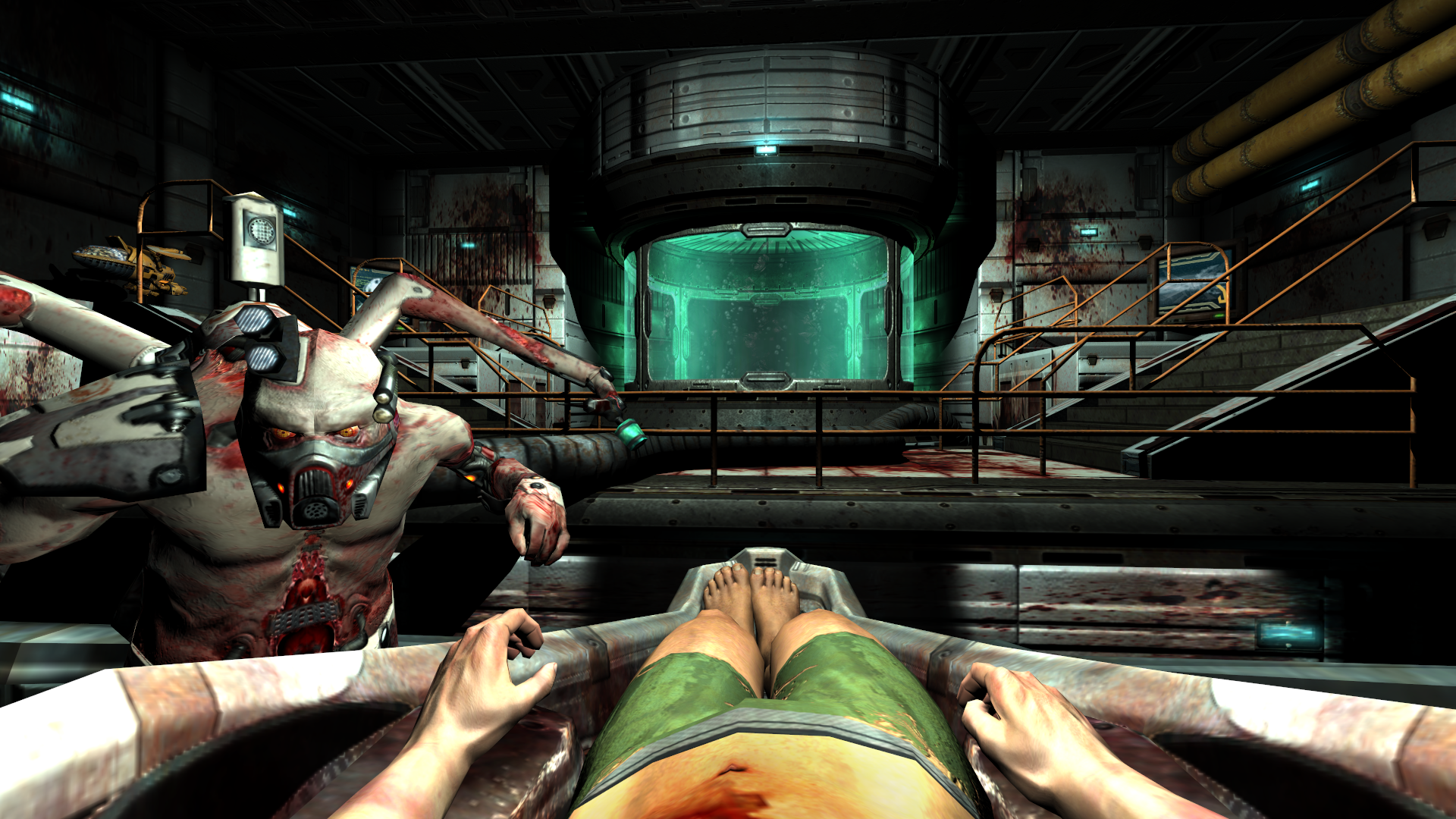
Quake 4 is mainly remembered for two things—the scene in which your character gets turned into a Strogg, and being the worst Quake game. Developed by Raven Software and released in 2005, Quake 4 wasn't a pure arena shooter like Quakes 1 and 3. Instead, it was a direct, story-driven sequel to Quake 2, and in telling that story borrowed many post-Millennium FPS trends. Cinematic cutscenes, squad-based gunplay, scripted in-game events, vehicle sections, Quake 4 has them all, where the previous games didn't.
This has led to it being accused of not only being a bad Quake game, but not being a Quake game at all. In his excellent article about the history of Quake modding, writer and game developer Robert Yang states "everyone agreed that Quake 4 didn't have it." Yang then cites a quote from John Romero himself, who said that "Quake 4 is where the brand went off the rails" in a 2016 interview.
But here's a question. What exactly is the Quake "brand"? Romero departed id after finishing the first game, and the sequels that followed it all differ wildly. The first is the poster child for classic, fast-paced FPS action set in gothic halls with rocket-jumps and gibs that bounce like basketballs. The second is an industrial sci-fi shooter with a slower pace and a greater emphasis on storytelling. The third game ditches singleplayer entirely, focusing exclusively on multiplayer. Beyond the fact they're all first-person shooters, there's little connective tissue.
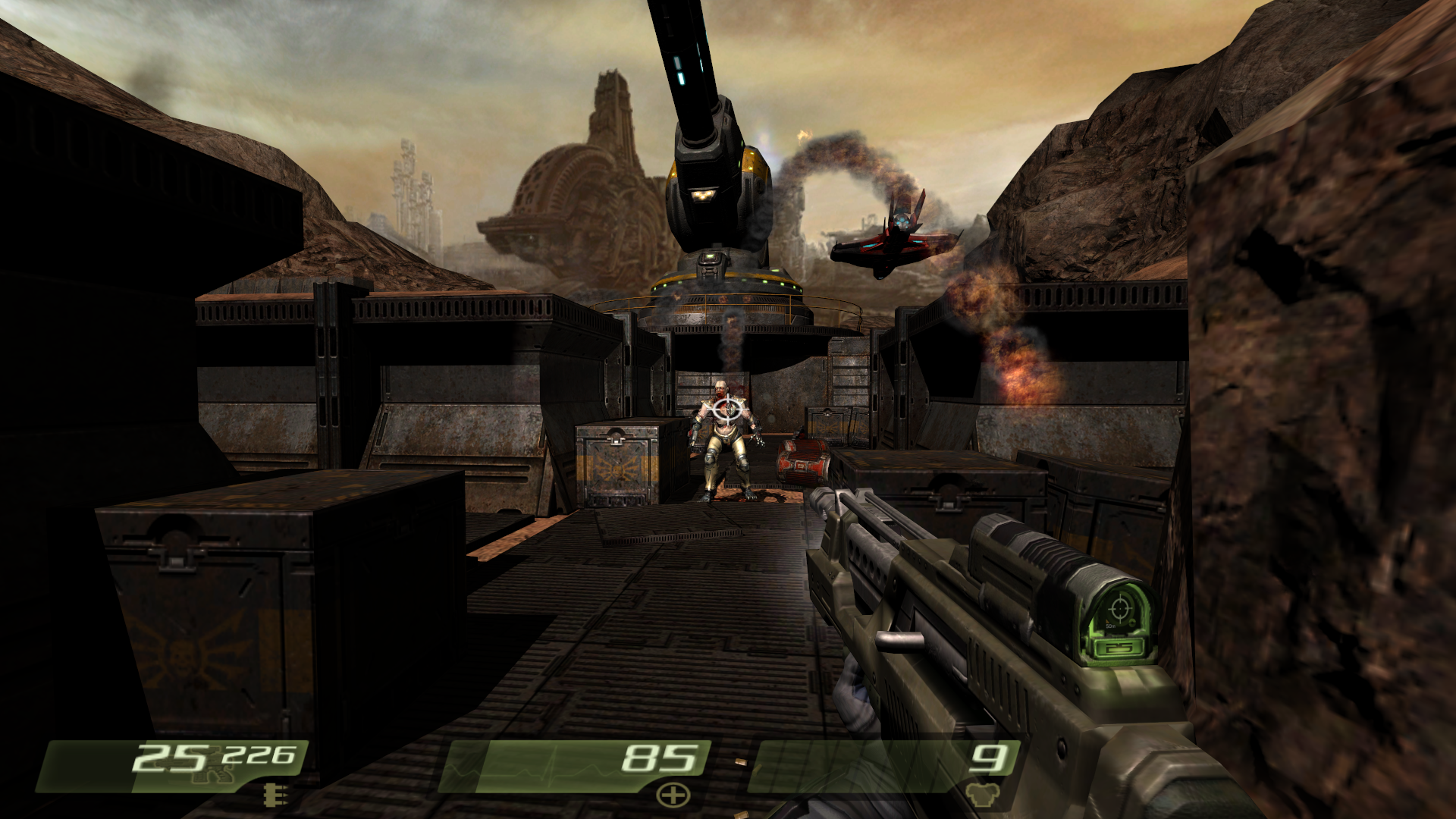
Indeed, there's an argument to be made that, if Quake has a brand at all, it's 'not knowing what Quake is'. With the original, half of id Software thought it was making a fantasy RPG for the first year of its development, which is why that game is such a bizarre infusion of different themes. Meanwhile, Quake 2 wasn't intended to be a Quake game at all, going through various original titles before id decided to slap on the Quake branding. Quake 3 undoubtedly has the purest vision within the series, but only because it cuts away half of its identity to attain it.
The only element the three games share is a tension between ideas, and the way each title responds to that tension is what ultimately shapes the game. The first Quake somehow managed to reconcile these diffuse concepts into something amazing. The second basically decided it was a Quake game regardless of its differences to the original. Quake 3 killed its singleplayer to become one of the best multiplayer games of all time. Quake is defined not by some specific formula, but by a cold and unflinching pragmatism.
In this, Quake 4 is as much a Quake game as any other, seemingly trying to resolve two conflicting ideas. Quake 4 follows-on directly from Quake 2, taking place immediately after that game's protagonist kills the Makron, overlord of the planet Stroggos and commander of its cyborg soldiers. Quake 4 switches to new protagonist Matthew Kane, who joins the Marines' Rhino Squad as part of the vanguard force for securing the planet.
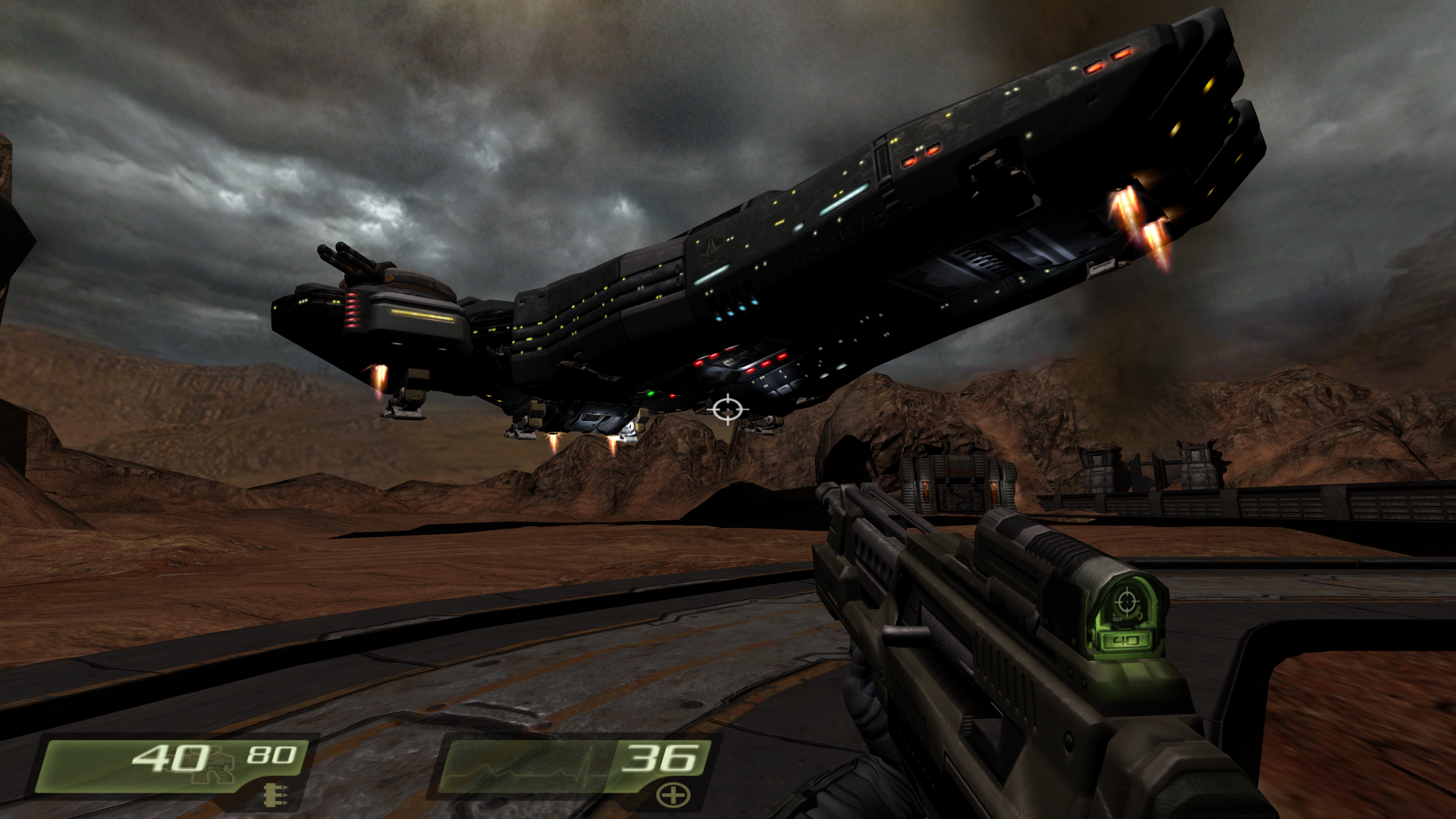
Quake 4 was developed at a time when the FPS was changing. Id's early shooters had been primarily inspired by the team's own Dungeons and Dragons games, which explains their mazey maps and ad-hoc storytelling. But Quake 4 emerged in the wake of games like Half-Life, Halo, and Call of Duty, which placed greater emphasis on scripted spectacle and telling coherent stories, drawing influence more from Hollywood than pen-and-paper RPGs.
The biggest gaming news, reviews and hardware deals
Keep up to date with the most important stories and the best deals, as picked by the PC Gamer team.
This is why Quake 4 initially plays like Call of Duty in space. The game begins not by plonking you unceremoniously at the start of a map, shotgun already in-hand, but with an elaborate cutscene that sees Kane scrambling to his feet after his dropship crashes, surveying the horror of the wreckage. The opening hour is not one of circle-strafing your foes while blasting them with a double-barrelled shotgun, but skulking slowly through flat gunmetal corridors, peppering Strogg with assault rifle fire while your squadmates back you up. The action stops every few minutes for dialogue between characters, or for a charming scripted sequence like a Strogg dragging away a screaming marine.
If anything separates Quake 4 from the other three games, it is following trends rather than setting them. And there's no question that Quake 4 is at its weakest when it is most like Call of Duty. Movement feels painfully slow compared to the breakneck pace of the first game. Level design is deeply uninspired: simple corridors and trenches that contain no verticality and no surprise. The shooting is flatter than a stingray that's been through a pasta roller, and many combat sequences take place with your avatar standing still.
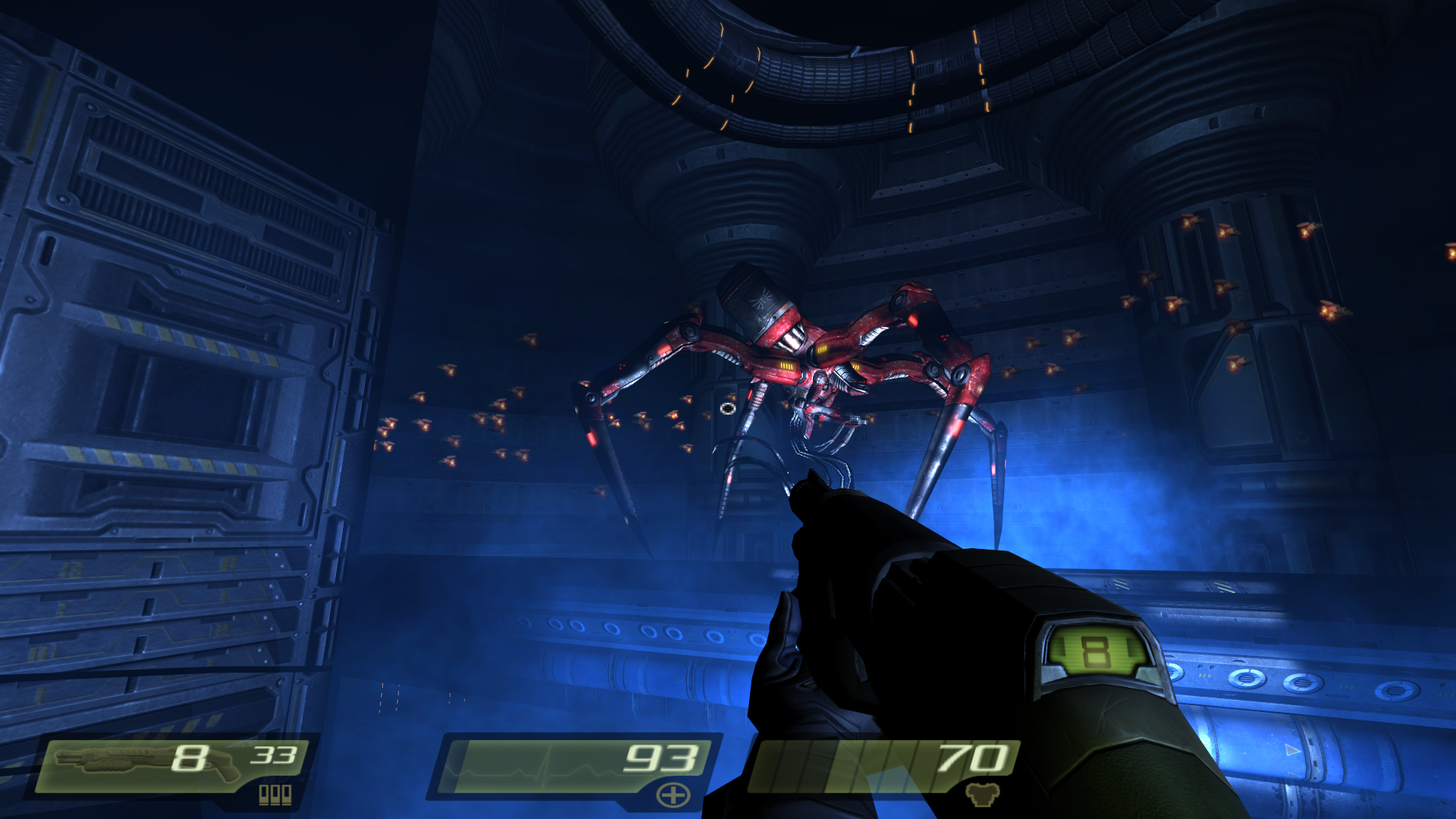
There are a couple of nice moments, such as when the massive USS Hannibal descends from orbit onto a nearby plain, a sequence that impresses in its scale even today. And the shooting improves as both the weaponry and enemy roster expands. Quake 4's shotgun is excellent, as is the nail-gun, complete with rotating bore and twin clips. But the encounter design still feels uninspired. Bizarrely, the game is closest in spirit to the original when you board a hover-tank, the armoured vehicle boasting the nimble, slippery movement Matthew Kane lacks.
Yet all this changes after the infamous Stroggification scene, which fifteen years on is still harrowing. Strapped to a gurney on an assembly-line from hell, Kane gets stabbed in the chest with a needle like a drainpipe, has his legs sawn-off and replaced with cybernetic prosthetics, and generally gets a shrapnel-based makeover, all in an effort to convert him into one of the cyborg grunts he's spent the last few hours fighting.
Not only does all of this horror happen in first person, but because you're on a conveyor belt with other marines, you see everything happen to someone else before it happens to you. Kane doesn't quite go Full Strogg, however, being rescued from the facility before the process is complete, and retaining his humanity if not much else. It's a bold sequence for a mid-2000s FPS. Watching your character be extensively and irrevocably changed is not something that generally happened in video-games. It was also before Call of Duty 4's atomic explosion made mid-game twists a standard in big-budget shooters.
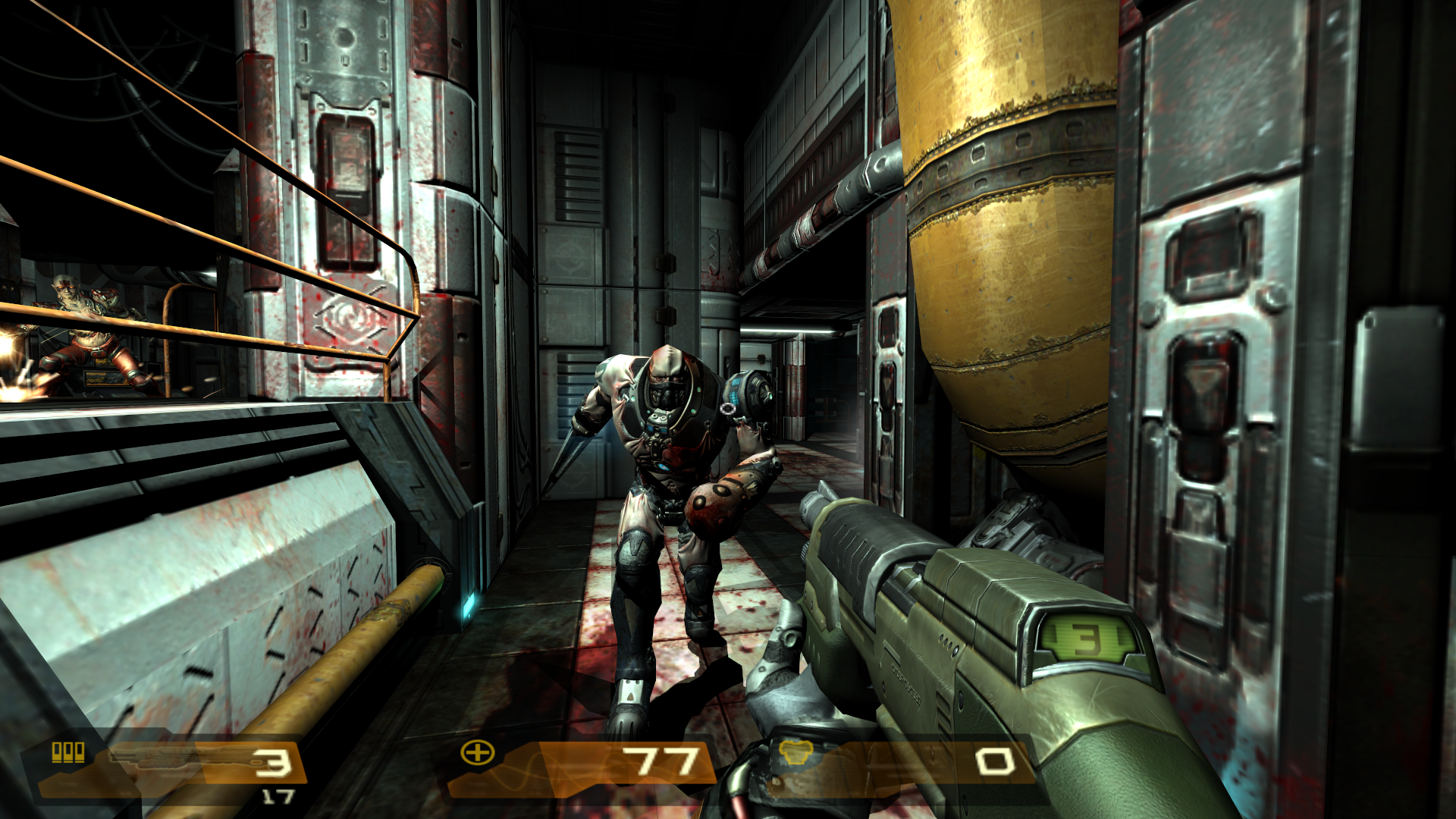
From a play perspective, the net effect of your Stroggification is that your fancy new legs double your movement speed—which initially seems underwhelming given the grisly fanfare the game depicts the Stroggification process with. But it isn't just Kane that changes in this moment, the whole game changes with him.
For starters, levels become more intricate, with corridors twisting and overlapping, introducing that missing verticality. Meanwhile, enemies appear more frequently and in greater numbers, forcing you to use your newly enhanced movement. Your escape from the "Recomposition centre" feels much more like a classic id FPS, with you darting around rooms and corners, exploding enemy chests with your shotgun and turning them into a fine red mist with the newly acquired Lightning Gun.
Quake 4 improves consistently from here. In the next level, Putrefaction Centre, you get your filthy cyborg hands on the railgun, letting you pop Strogg heads like metal grapes. The game also starts making direct callbacks to the original Quake, such as the introduction of 'zombies' in the Waste-Processing level, zombies who have a tenuous relationship with their own limbs (though they don't throw lumps of their own flesh at you, sadly).
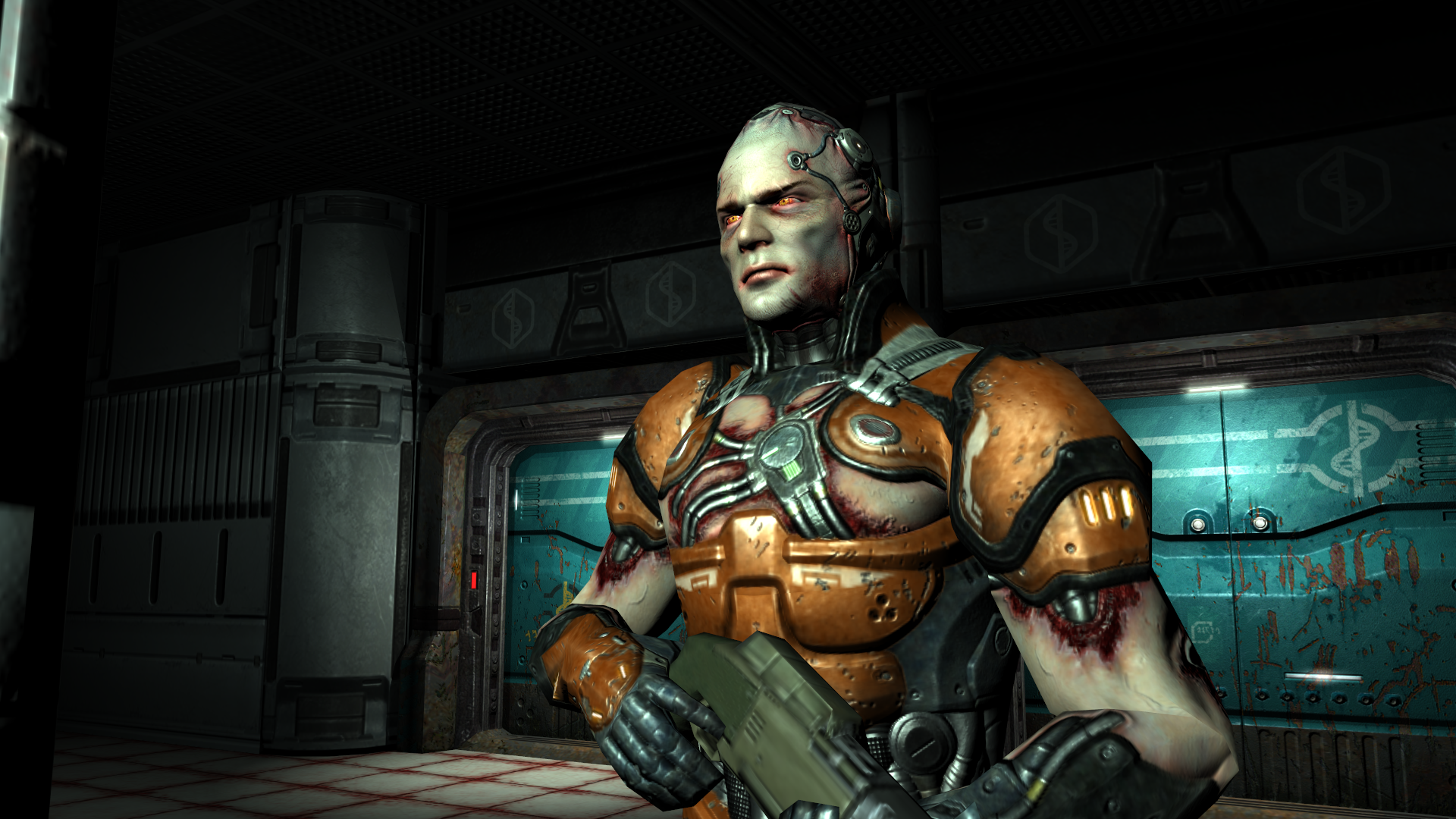
Even the newer stuff starts to work better, filtered more carefully through a Quake lens. Arguably the best mission is the underwhelmingly-named "Data-Storage Terminal", which commences with your drop pod descending from the airborne USS Hannibal, before crashing into the eponymous Strogg facility, smashing through bulkheads and splattering Strogg goons. The rest of the level blends fast-paced gunplay with quickfire scripted moments, such as another drop-pod bursting through a wall in front of you, the glowing gouge it leaves in the floor creating a new pathway. You even get a gun that shoots black holes—it's brilliant!
It's as if Raven is trying to sneak Quake in through the back door, luring in unsuspecting Call of Duty fans with its cinematic first act, before hitting them with both barrels post Stroggification. With its movement amplified and its weapon and enemy roster fully unlocked, Quake 4 is genuinely entertaining. Aside from a tedious mech sequence, it maintains this pace and intensity through the remainder of the game.
Quake 4 is only the worst Quake game when it's pretending not to be one. In full flow, it's probably a better FPS than Quake 2, and it's definitely a better shooter than Doom 3. Raven Software, forever the unsung hero of FPS developers, knew exactly what it was doing with Quake 4, and while the game would benefit from getting to the point a little sooner, there is some good old fashioned Quaking lurking behind Quake 4's cinematic exterior.
Rick has been fascinated by PC gaming since he was seven years old, when he used to sneak into his dad's home office for covert sessions of Doom. He grew up on a diet of similarly unsuitable games, with favourites including Quake, Thief, Half-Life and Deus Ex. Between 2013 and 2022, Rick was games editor of Custom PC magazine and associated website bit-tech.net. But he's always kept one foot in freelance games journalism, writing for publications like Edge, Eurogamer, the Guardian and, naturally, PC Gamer. While he'll play anything that can be controlled with a keyboard and mouse, he has a particular passion for first-person shooters and immersive sims.

